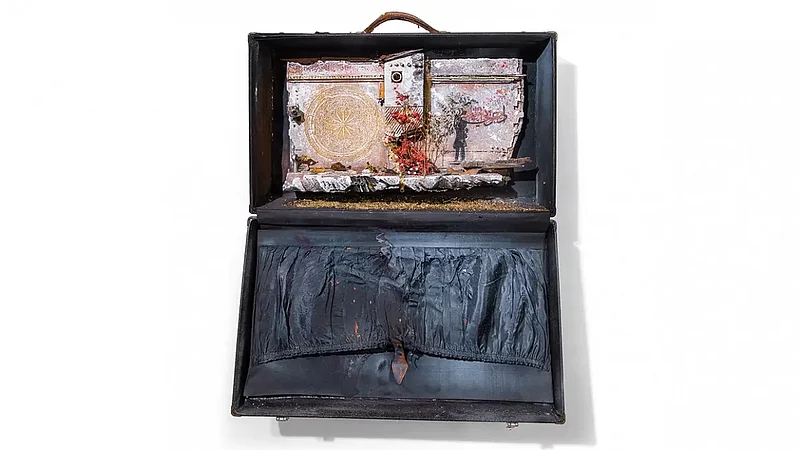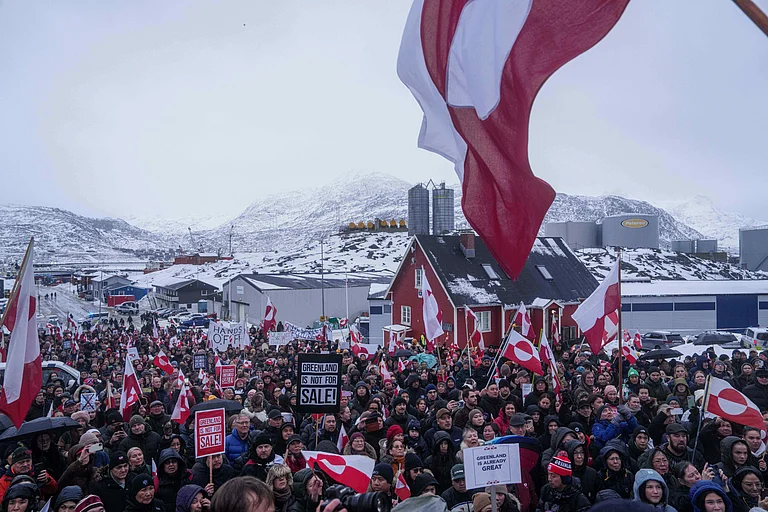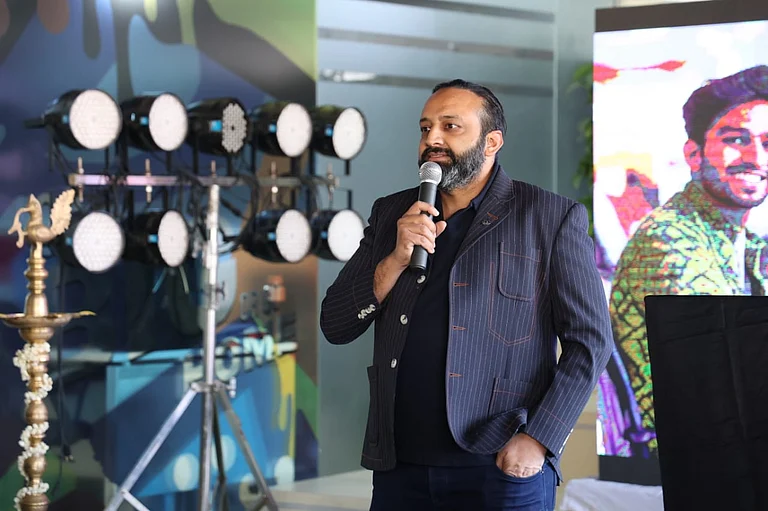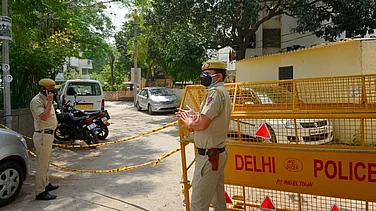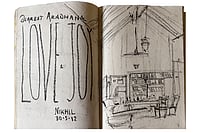It has been nine years since we last spoke.
“So much changed since you last visited us. I brought my parents here in Utica from Myanmar,” San Win tells me over the phone from a small city in Upstate New York where we first met in 2007 when she and her younger brother arrived as refugees from the camps in Thailand. That year, hundreds of refugees from Myanmar were being resettled in Utica, a small city with a little over 65,000 people with a quarter of those being refugees from many countries, including Vietnam, Bosnia, Cambodia, Somalia, Afghanistan, and Myanmar.
Back then, San Win was a young woman in her twenties. She had left her village in Kayin State in Myanmar’s southern region in 1999 not knowing she’d not return until 2019 only to bring her parents to Utica.
That evening in 1999, she recalls, the military came and destroyed her village, burnt everything and she, along with many others, fled to the border that Myanmar shares with Thailand. Her parents had gone to another village and she wouldn’t see them until 2019. For a long time, she didn’t know if they had survived.
San Win is from the ethnic Karen minority and she crossed into Thailand a few years later and lived in refugee camps before she was chosen for third-country resettlement in the United States.
“We walked for three days to reach the camps in Thailand,” she says.
She sends me photos of her village. Bluest skies and foamy clouds hang over greyish mountains, a river carrying a few boats, and a woman in a village market cooking.
“I want to go back again. I can’t live there anymore. Utica is my address now,” she says. “It is still dangerous there.”
Almost 74 years have gone by since what they call the “long march of the Karen revolution” against the Bamar-dominated military regime in Myanmar, formerly Burma.

San Win is in her forties now. She owns a grocery store and has bought two houses since she moved to Utica.
“I miss you,” she says.
In 2014, I had spent a night at her house. We have a picture from back then. She is sitting in the window, a cup of tea in her hands. The house was on Rutgers Street.
Hundreds of refugees have once again died by drowning in the Mediterranean Sea.
In my archives from my reporting days in Utica, where I worked at the Utica Observer-Dispatch, I find a few stories, a few people, a few references, and a few quotes.
***
“I’ll go to them now as though it was always meant to be, as though the very day that my mother birthed me, she had chosen me to live life eternal, among the children of the deep blue sea, those who have escaped the chains of slavery to form a world beneath the heavens and the blood-drenched earth where you live” —Children of the Sea, Kirk Krak
I remember the story of the Haitian boy on the boat going to another shore, away from his country, fleeing persecution, that Haitian author Edwidge Danticat writes in Krik? Krak! It is called Children of the Sea. The boy dies. There is separation as a central theme, a fact of a refugee’s life. The narrators in the story are lovers. One flees Haiti on a rickety boat. The other remains on the island. I read it when I lived in Utica, a city that many call a refuge. It isn’t a perfect place. The winters are harsh, the jobs scarce. There is growing intolerance against the “others” and yet, the city stands as an example of a place that has managed to be that second home for refugees like San Win who, in turn, resuscitated a dying Rust Belt City that underwent an economic downturn throughout the mid-20th century.
Once it was home to companies like General Electric and there were jobs and then, the plants closed down as they did in many such manufacturing towns. Utica’s population stood at 100,000 in 1960. By the 1990s, it had plunged to 60,000.
When the city of Utica got onto its feet, it did so because the refugees stayed.

Once upon a time, the bumper stickers in the city read, “Would the last person to leave Utica please turn out the lights”, but the city survived and thrived too. It was in the 1970s when Roberta Douglas, a local, helped an Amerasian from Vietnam resettle in Utica.
Hundreds more were settled and in 1979, she established the Mohawk Valley Resource Center for Refugees.
Over the next four decades, many more arrived in this city with its lost grandeur.
Slowly, the economy felt the surge of blood. The new hair salons, coffee shops and Bosnian restaurants pumped energy into the staggering economy. New temples and churches and mosques came up too.
With all this, Utica’s identity too underwent a cosmetic change. From being a manufacturing town that was an important contributor to the American industrial growth, it became a town of refugees.
Already, it was home to many immigrants who arrived in the 19th century from Europe and parts of Middle East. Germans, Poles, and Italians had all been living here before the influx of successive waves of refugees through the State Department’s Refugee Resettlement Program came in. It was in 1996 that around 2,000 Bosnian refugees came to Utica. Another 2,000 came in another couple of years. Then came the Russian refugees and now, Ukrainians are the latest to be resettled into this community.
***
In 2003, 61 Somali Bantus were resettled in Utica. Now, there are thousands. The Somali Bantu had been living in refugee camps in Kenya in the aftermath of a civil war in the 1990s.
I had met first Jeylani Hassan in the summer of 2006. That afternoon, Brazil was playing Australia in the soccer World Cup. Five of them huddled in front of the small TV in the two-bedroom apartment at 109 Nielson St. and watched the game.
Later, he had told me his story.
The soldiers killed Hassan’s mother after they raped her, then they raped his sister and shot his younger brother, seven at the time, because he happened to offend them.
Hassan witnessed all of this. The soldiers from Mogadishu, who roamed around killing and raping, had guns.
“You could not even cry. They (soldiers) were scary,” he said.
As he spoke, his friend Amjad folded his pants to show bullet marks on his right thigh. He saw his seven brothers being shot by the soldiers. They had left him for dead in a carnage that left around 5,000 dead in his village. Amjad, bleeding, crawled 500 feet to safety.
The soldiers were everywhere. There was no escaping them but by traveling to Kenya. And the travel would take days. They would have to walk through the deserts, the swamps and fields —without food or water.
“It took seven days. No food, no water. We had one gallon and 700 people,” Hassan said.
Sidi, another refugee from Somalia, said he had to drink urine in order to survive.
There were no goodbyes. Hassan’s family members ran in different directions. He lost his father and siblings, he said. In Kenya, they stayed in refugee camps, along with around 50,000 other refugees from Sudan, Somalia and Uganda—African nations that had been ravaged by dictatorships and civil wars.
Hassan lived in the refugee camp in Kenya for 12 years before arriving in the US.
At the time when I met him, he was working as a cleaner at Planet Fitness. He said he wanted to return to his homeland to help others.
“I will be a big manager there. If I know little English, I can get a good job in Africa,” he had said.
But even then, he knew that wasn’t a possibility.
Somali Republic gained independence in 1960. However, things got worse with in-fighting between various tribes. Hassan and many like him had never seen fans or even electric bulbs before they came to Utica.
The flight that took Hassan from Kenya to Nairobi was a small carrier and Hassan said he was terrified and felt lumps in his throat when there was turbulence. The bigger plane that brought him from Nairobi to United States was better, he said. And then he saw snow for the first time.
Then, there was the cultural adjustment. Polygamy is common amongst Somali Bantus. In the US, it is a crime.
I looked for Hassan and Amjad in 2014 when I returned to Utica, but wasn’t able to locate them. It wasn’t easy for Utica to resettle the refugees from these countries. The Bosnians, who had come in earlier, were a different case. They were white. In those years, the centre struggled to provide interpreters, counsellors and funding. The centre’s mission statement read— “Many Cultures, One Community”.
The number of refugees coming into the city dropped suddenly after the government passed the Patriot Act and the Material Support Provision, which makes screening very strict and thus limits the number of refugees coming into the United States.
Branching out into providing different services and exploring new opportunities for generating revenue for its survival became imperative for the refugee center. They had to also foster a dialogue between various groups and with the local community in order to bridge in the divide.
“We are moving into a new phase. We have redirected our efforts to start conversations. We have begun to look at our relationship,” Peter Vogelaar, executive director of the refugee center, had told me then.
Utica also became a place of conversations, of identities and to me, it was a refuge too. I left in 2008. But I carried my notebooks. Back to India, Utica had shown me that there was hope. Utica taught me empathy. It taught me friendship.
The day before I left, I went to the site of the mosque and saw Avlim Tricic, the president of the Bosnian Islamic Association of Utica, putting the crescent moon on top of the former church. To me that was symbolic.
“You come back,” San Win says. “Write about us.”
Utica is a place of healing. San Win sends me more photos. In one, she is with her parents. They are smiling. In another, she is standing next to her new car.
There are terrible stories of deaths and “otherisation” of the refugees.
Adriana’s drowning is the latest.
I returned to Utica. Through my notes, and a phone call to that city … the last refuge. I hope we can learn from Utica.







